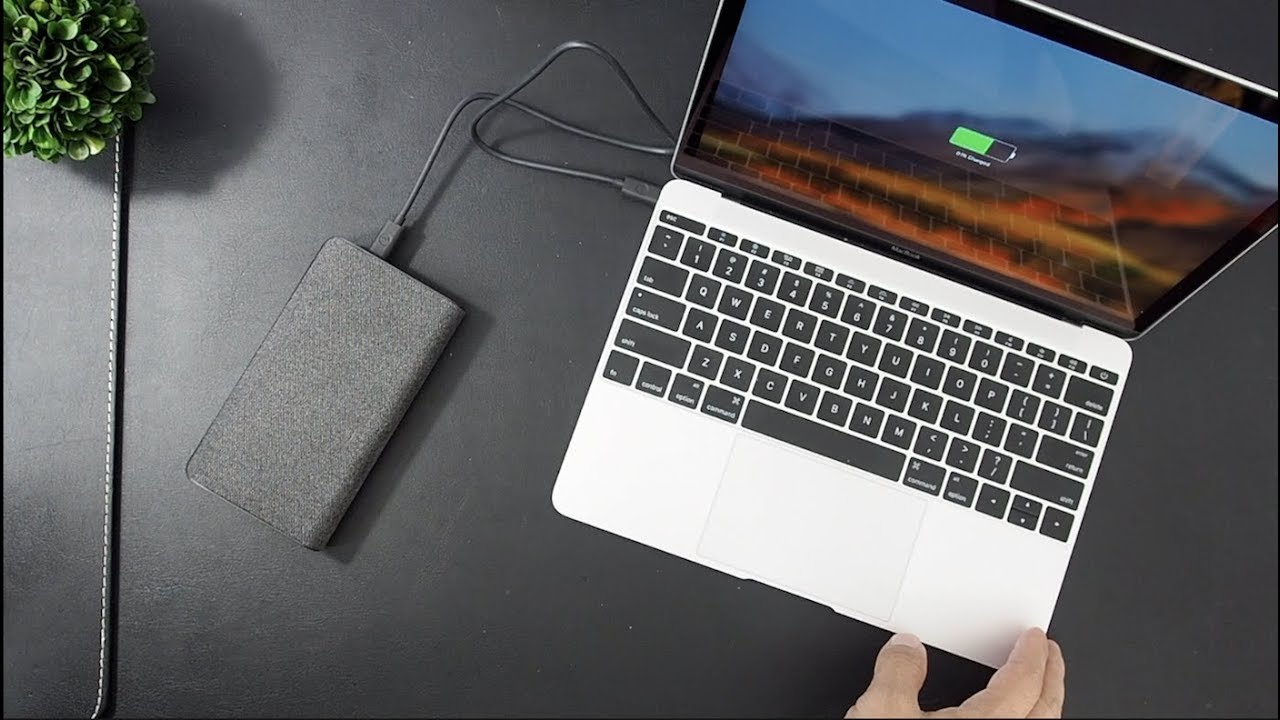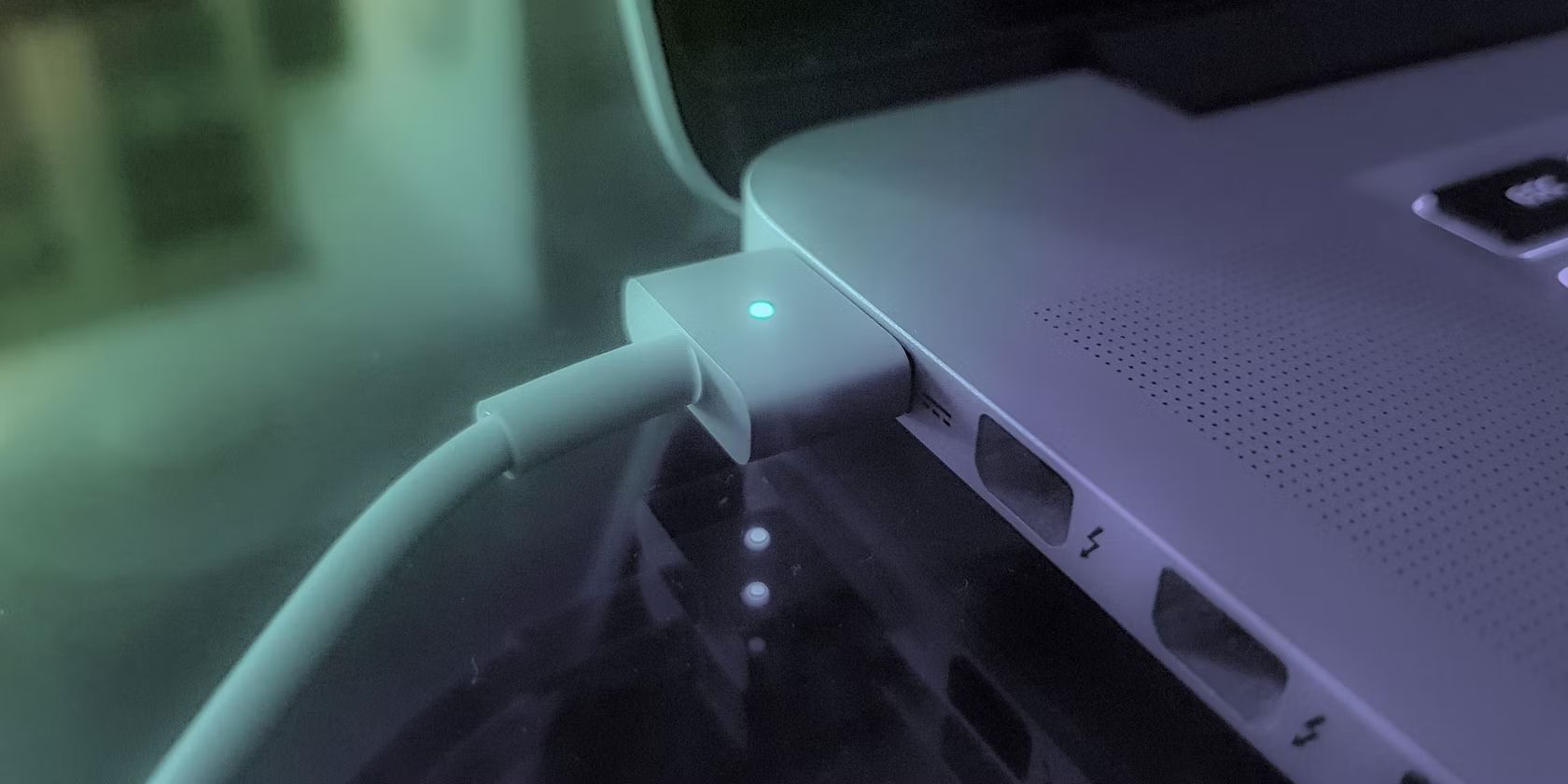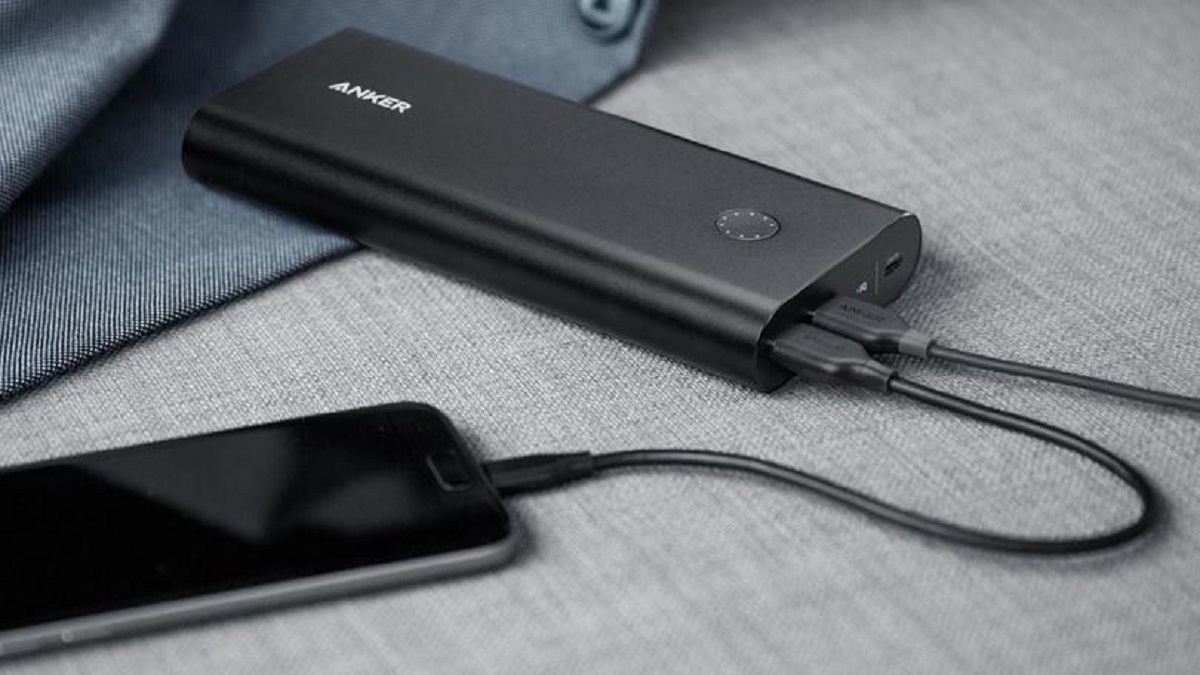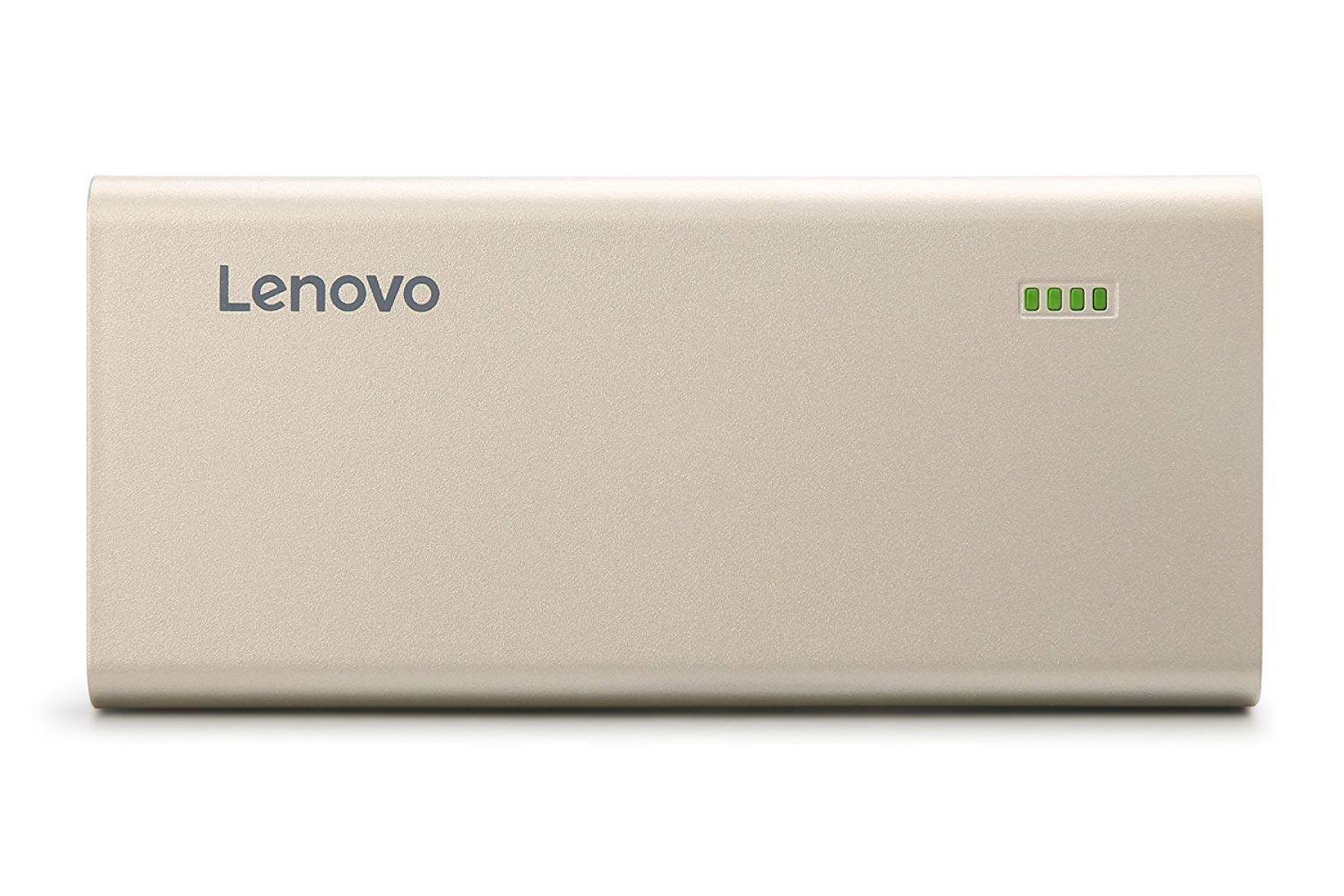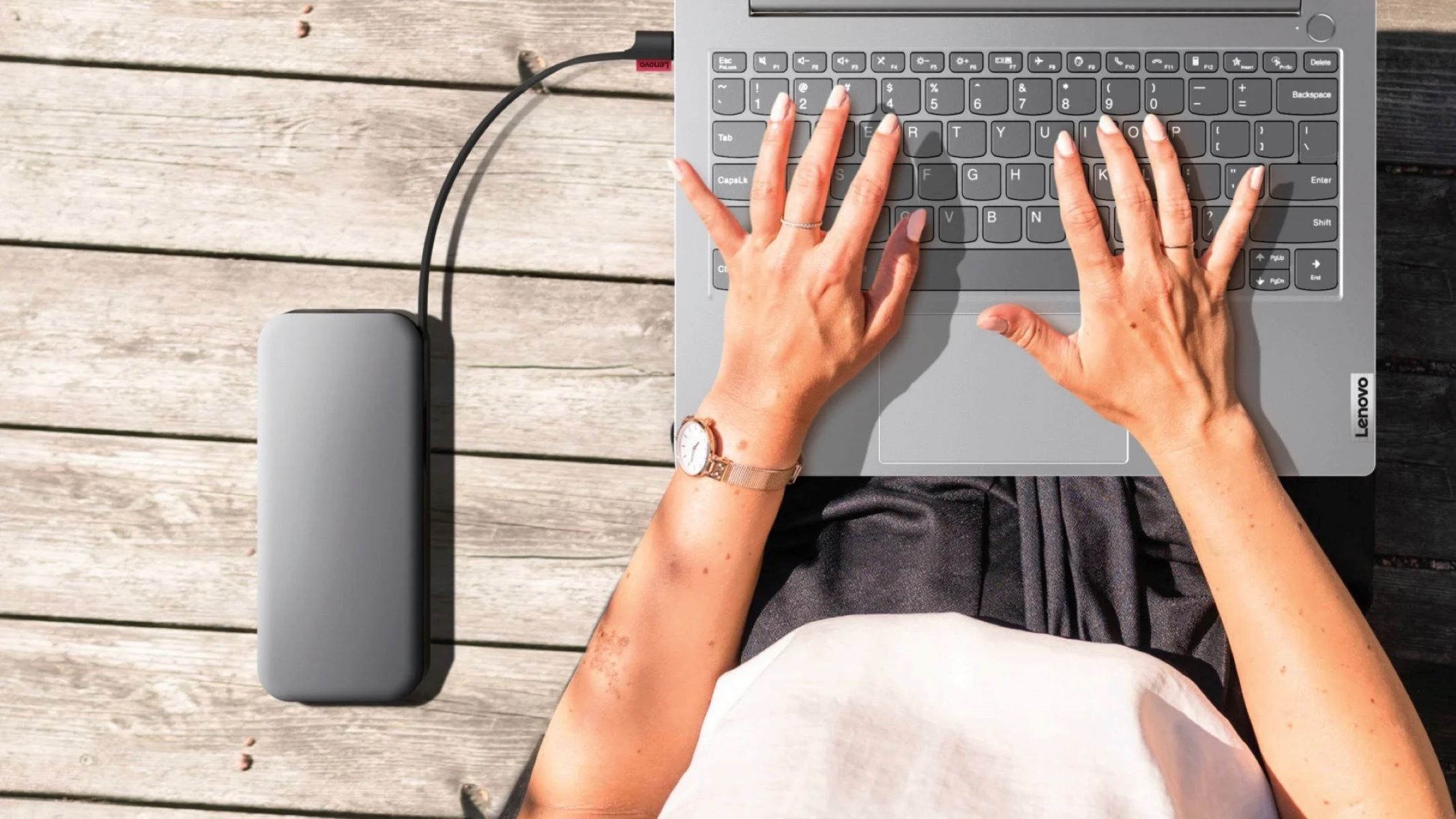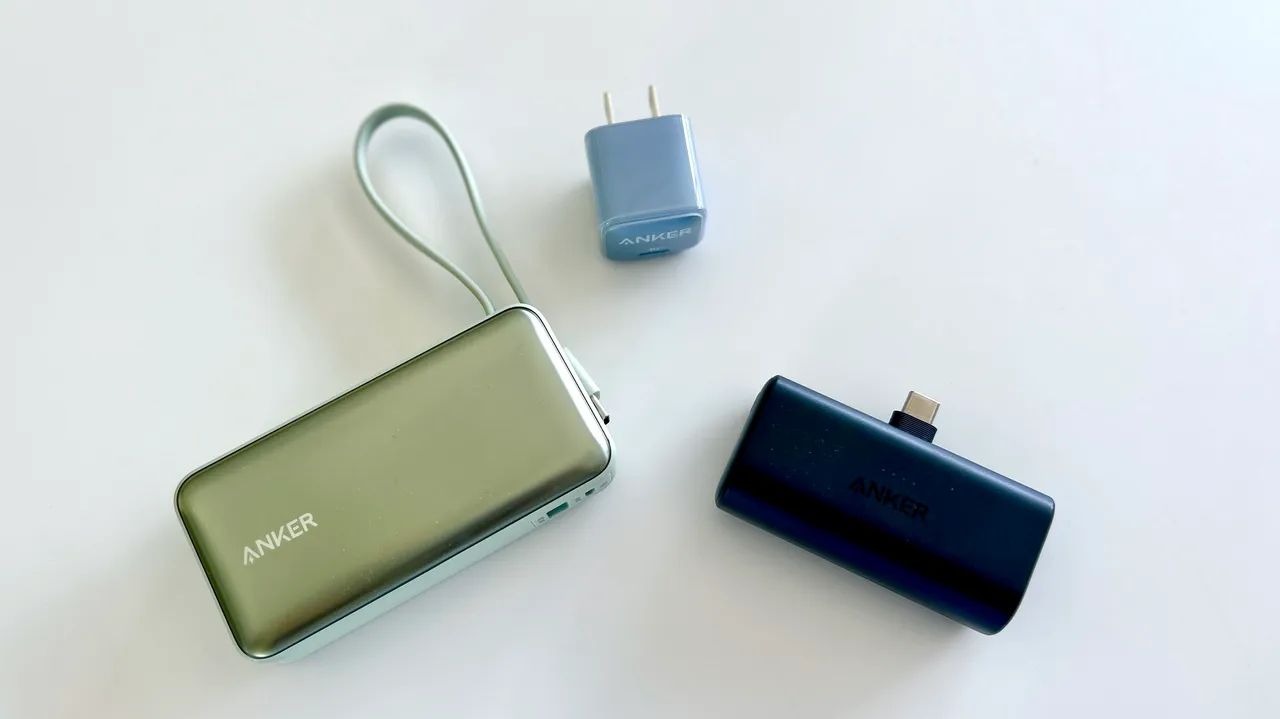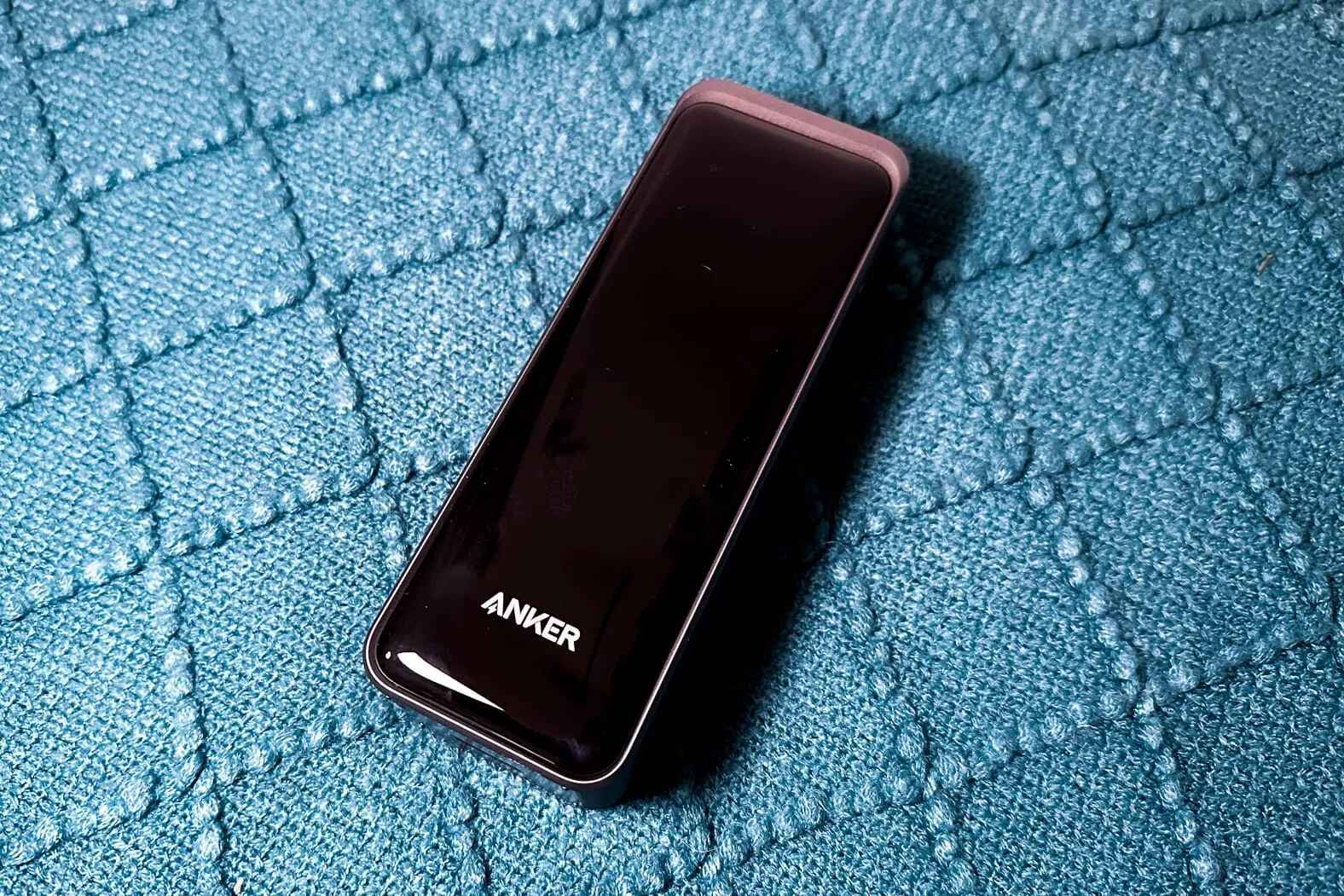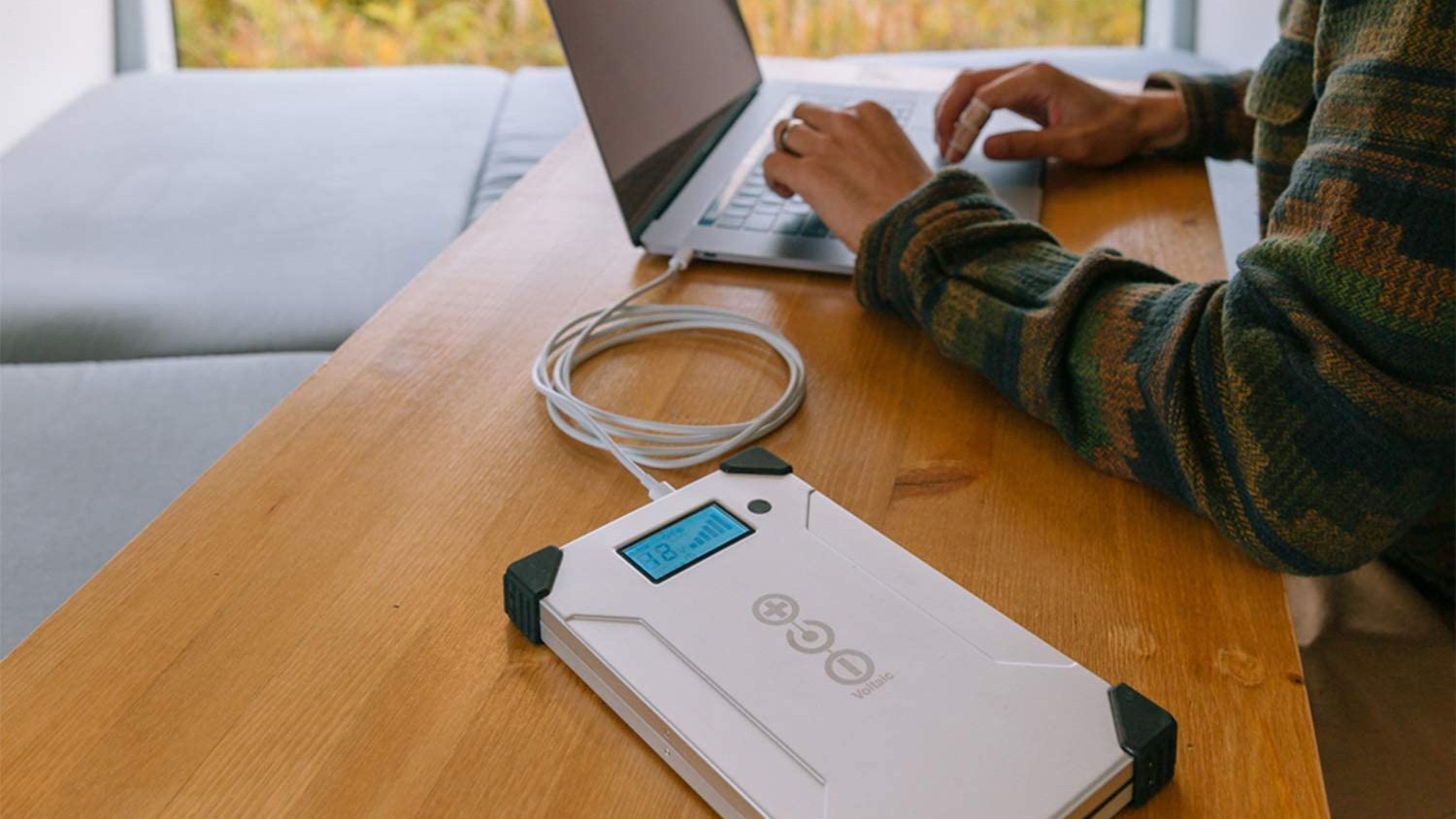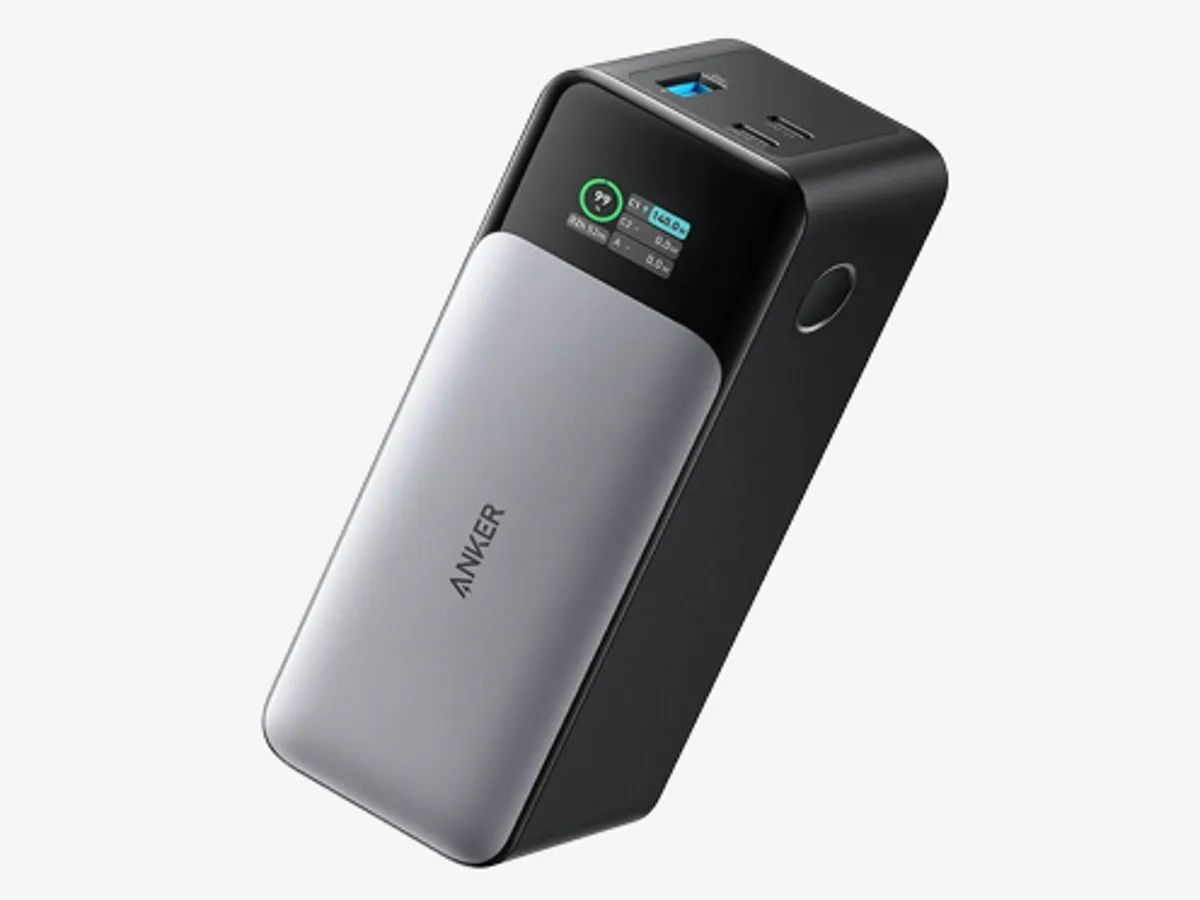Introduction
As technology continues to advance, our reliance on portable devices like laptops and tablets has greatly increased. One such popular device is the MacBook, known for its sleek design and powerful performance. However, like any electronic device, the MacBook needs a reliable power source to keep it running throughout the day.
While traditional charging methods involve plugging your MacBook into a wall socket, there may be times when you’re on the go and don’t have immediate access to a power outlet. This is where a power bank can come in handy.
A power bank is a portable battery pack that allows you to charge your devices on the go. It’s like having an extra external battery that can provide a much-needed boost of power when you’re away from conventional power sources.
In this article, we will discuss how to charge your MacBook with a power bank. We’ll cover important considerations such as understanding the power requirements of your MacBook, selecting the right power bank, checking compatibility, and the actual process of connecting and charging your MacBook.
Whether you’re a digital nomad, a frequent traveler, or someone who simply wants the convenience of charging their MacBook without being tied to a wall socket, this guide will help you make the most out of your power bank and keep your MacBook powered up no matter where you are.
Understanding the Power Requirements of a MacBook
Before you can effectively charge your MacBook with a power bank, it is crucial to understand the power requirements of your device. Apple provides specific power requirements for each MacBook model, and it’s essential to ensure that your power bank meets or exceeds these requirements.
The power requirements of a MacBook typically include the voltage and current needed for charging. Most MacBook models require a voltage of 14.5V or 20V and a current output of 2A or higher. It is important to check the power bank specifications to ensure that it provides the necessary voltage and current output.
Another important factor to consider is the power bank’s capacity, often measured in milliampere-hours (mAh) or watt-hours (Wh). The capacity determines how much charge the power bank can hold and how many times it can charge your MacBook. For example, if your MacBook battery has a capacity of 5000mAh and your power bank has a capacity of 10000mAh, it should be able to fully charge your MacBook twice.
It’s worth noting that using a power bank with a higher capacity can provide multiple charges for your MacBook, while a power bank with a lower capacity may only provide a partial charge. Therefore, it’s recommended to select a power bank with a capacity that suits your needs and ensures you have enough power to keep your MacBook running.
Additionally, consider the charging speed of the power bank. Some power banks support fast charging, which can significantly reduce the overall charging time of your MacBook. If you prioritize fast charging, look for power banks that have features like Power Delivery (PD) or Quick Charge (QC), which are optimized for fast and efficient charging.
Understanding the power requirements of your MacBook and selecting a power bank that meets those requirements is crucial for a successful charging experience. By doing so, you can ensure that your MacBook charges efficiently and safely, without any potential damage to your device or the power bank.
Selecting the Right Power Bank
When it comes to selecting the right power bank for charging your MacBook, there are several factors to consider. Choosing a power bank that meets your specific needs will ensure a seamless charging experience and provide sufficient power for your device.
1. Capacity: The capacity of the power bank is one of the most crucial factors to consider. As mentioned earlier, it is measured in milliampere-hours (mAh) or watt-hours (Wh). Look for a power bank with a capacity that can provide multiple charges for your MacBook, depending on your usage requirements.
2. Output Voltage and Current: Ensure that the power bank’s output voltage and current match or exceed the requirements of your MacBook. It’s recommended to choose a power bank with a voltage output of 14.5V or 20V and a current output of 2A or higher.
3. Compatibility: Check if the power bank is compatible with your MacBook model. Some power banks may be specifically designed for certain MacBook models, while others are more versatile and can work with multiple devices.
4. Charging Speed: Consider the charging speed offered by the power bank. Look for features like Power Delivery (PD) or Quick Charge (QC) support, which can provide faster and more efficient charging for your MacBook.
5. Portability: If you’re often on the go, choose a power bank that is lightweight, compact, and easy to carry. Portability is essential for convenience, especially if you need to charge your MacBook while traveling or away from a power source.
6. Build Quality: Look for a power bank with a durable build quality that can withstand daily use and occasional bumps. Quality power banks are usually made from high-quality materials and have solid construction.
7. Safety Features: Ensure that the power bank has built-in safety features such as overcharge protection, short circuit protection, and temperature control. These features help protect your MacBook and the power bank itself from potential damage.
By considering these factors and evaluating your specific charging needs, you can select the right power bank that provides reliable and efficient charging for your MacBook. Remember that investing in a high-quality power bank is essential to ensure a safe and consistent power supply for your device.
Checking the Power Bank’s Compatibility with MacBook
Before connecting your power bank to your MacBook, it is crucial to ensure their compatibility to avoid any potential issues or damage to your device. Here are a few steps you can follow to check the compatibility between your power bank and MacBook:
1. Check the Power Bank’s Output: Look for the specifications of your power bank and verify that it provides the required voltage and current output for your MacBook. As mentioned earlier, most MacBooks require a voltage of 14.5V or 20V and a current output of 2A or higher. Ensure that your power bank meets or exceeds these requirements.
2. Consider the Power Bank’s Connectivity: Check the cable and port options provided by the power bank. Ensure that it offers a compatible connector for your MacBook. Some power banks come with USB-C or MagSafe connectors, which are commonly used for charging MacBooks. If your MacBook model requires a specific connector, make sure the power bank has that option available.
3. Look for Certifications: Check if the power bank has any relevant certifications or compatibility labels, such as Apple’s MFi (Made for iPhone/iPad/iPod) certification. These certifications indicate that the power bank has been tested and approved for compatibility with Apple devices, including MacBooks.
4. Research User Feedback: Read customer reviews or seek recommendations from reliable sources to see if others have successfully used the power bank with their MacBooks. Real-world experiences and feedback can give you insights into the compatibility and performance of the power bank.
5. Consult the Manufacturer or Retailer: If you are still uncertain about the compatibility of the power bank with your MacBook, reach out to the manufacturer or retailer for clarification. They can provide you with accurate information and guide you towards compatible options.
By following these steps, you can ensure that the power bank you choose is compatible with your MacBook, minimizing the risk of any charging or compatibility issues. It is crucial to pay attention to these details to safeguard your MacBook and maximize its charging efficiency.
Connecting the Power Bank to the MacBook
Once you have identified a compatible power bank, the next step is to connect it to your MacBook for charging. Follow these steps to ensure a seamless connection:
1. Power off your MacBook: Before connecting the power bank, it is recommended to power off your MacBook to avoid any potential issues or malfunctions during the connection process.
2. Locate the appropriate port: Identify the charging port on your MacBook. Most modern MacBook models are equipped with USB-C ports, while older models may have MagSafe or other proprietary charging ports. Make sure to locate the correct port for your MacBook.
3. Connect the cable to the power bank: Plug one end of the cable into the power bank’s output port that matches your MacBook’s charging port. Ensure a secure connection to avoid any interruptions in the charging process.
4. Connect the other end of the cable to your MacBook: Plug the other end of the cable into the charging port of your MacBook. Again, ensure a secure and snug connection to prevent any accidental disconnections while charging.
5. Power on your MacBook: Once the power bank is securely connected to your MacBook, power on your device. You should see the battery icon on your MacBook’s screen, indicating that it is charging.
6. Monitor the charging progress: Keep an eye on your MacBook’s battery status screen or status bar to track the charging progress. Depending on the capacity of the power bank and the current battery level of your MacBook, the charging time may vary. Be patient and allow your MacBook to charge fully.
7. Disconnect the power bank when charging is complete: Once your MacBook is fully charged or you no longer require charging, safely disconnect the cable from both your MacBook and the power bank. Unplugging the cable while it’s still charging can disrupt the charging process and potentially cause damage.
Remember to handle the cable and the power bank with care to avoid any physical damage during the connection process. By following these steps, you can effectively connect your power bank to your MacBook and ensure a reliable and efficient charging experience.
Charging the MacBook with the Power Bank
Now that you have successfully connected your power bank to your MacBook, it’s time to start the charging process. Follow these steps to charge your MacBook effectively:
1. Ensure a Stable Power Bank Connection: Verify that the power bank is securely connected to your MacBook and that the cable is not loose or disconnected. A stable connection is essential for uninterrupted charging.
2. Monitor the Charging Status: Keep an eye on your MacBook’s battery status to monitor the charging progress. You can check the battery percentage in the menu bar or the battery icon on the screen to see how much charge has been added.
3. Avoid Using the MacBook While Charging: To optimize the charging process, it is advisable to avoid using your MacBook extensively while it is connected to the power bank. Running demanding applications or tasks can slow down the charging speed and limit the effectiveness of the power bank.
4. Charge in a Cool Environment: It is recommended to charge your MacBook with the power bank in a cool environment. High temperatures can affect the charging efficiency and may even damage the power bank or MacBook. Avoid exposing the devices to direct sunlight or heat sources while charging.
5. Be Patient and Allow for Sufficient Charging Time: The charging time can vary depending on the capacity of the power bank and the current battery level of your MacBook. Be patient and allow sufficient time for your MacBook to charge fully. Avoid interrupting the charging process prematurely, as it may result in an incomplete charge.
6. Disconnect When Charging is Complete: Once your MacBook is fully charged or no longer needs charging, safely disconnect the power bank from your MacBook. Unplug the cable from both devices to avoid any potential damage and to conserve the power bank’s battery life for future use.
7. Recharge the Power Bank: After using the power bank to charge your MacBook, don’t forget to recharge the power bank itself. Connect it to a power source, such as a wall socket, and allow it to recharge fully before your next use.
Following these steps will ensure the efficient charging of your MacBook using a power bank. It is important to note that the actual charging time and performance may vary depending on various factors, including power bank capacity, MacBook model, and usage conditions. By being mindful of these considerations, you can make the most out of your power bank and keep your MacBook powered up on-the-go.
Tips for Efficiently Charging Your MacBook with a Power Bank
Charging your MacBook with a power bank is a convenient way to keep your device powered up on the go. To maximize the efficiency of your charging experience, consider the following tips:
1. Choose a High-Quality Power Bank: Invest in a reliable and reputable power bank that offers the necessary voltage and current output for your MacBook. High-quality power banks are more efficient and provide a stable power supply.
2. Opt for a Higher Capacity Power Bank: Select a power bank with a higher capacity than the battery capacity of your MacBook. This ensures that you can charge your device multiple times without needing to recharge the power bank frequently.
3. Prioritize Fast Charging: Look for a power bank that supports fast charging technologies, such as Power Delivery (PD) or Quick Charge (QC). These technologies can charge your MacBook at a faster rate, saving you time and allowing you to continue using your device sooner.
4. Keep Your Power Bank Fully Charged: Regularly recharge your power bank so that it’s always ready to provide a quick power boost to your MacBook. Set a routine to recharge it after each use to ensure it’s at full capacity when you need it.
5. Avoid Extreme Temperatures: High temperatures can affect the charging efficiency of your power bank. Avoid exposing it to direct sunlight or placing it near heat sources. Similarly, extreme cold temperatures can also have an impact. Find a cool environment for optimal charging conditions.
6. Minimize Battery Drain: To make the most out of your MacBook’s battery life, close unnecessary applications, dim the screen brightness, and disable power-hungry features like Bluetooth and Wi-Fi when not in use. This helps extend the charging duration provided by the power bank.
7. Disconnect Unused Peripherals: Remove any external devices or peripherals connected to your MacBook while charging with a power bank. Unplugging these devices can help reduce power consumption and enable faster charging.
8. Use Sleep Mode or Shut Down: If you’re not actively using your MacBook while it’s charging, put it in sleep mode or shut it down. This minimizes power usage and allows the power bank to focus solely on charging the battery.
By implementing these tips, you can ensure a more efficient charging experience with your power bank, allowing you to maintain optimal battery levels on your MacBook and enjoy uninterrupted usage no matter where you are.
Conclusion
Charging your MacBook with a power bank provides a convenient solution for staying powered up on the go. By understanding the power requirements of your MacBook, selecting the right power bank, checking compatibility, and effectively connecting and charging your device, you can ensure a seamless and efficient charging experience.
Remember to choose a power bank that matches or exceeds the voltage and current output requirements of your MacBook. Consider factors like capacity, charging speed, portability, build quality, and safety features when selecting a power bank. Checking for certifications and researching user feedback will also help you make an informed choice.
When connecting the power bank to your MacBook, ensure a stable connection and monitor the charging status. Avoid using your MacBook extensively while it is charging to optimize the charging process. Charge your MacBook in a cool environment and allow sufficient time for a full charge.
Follow the recommended tips for efficiently charging your MacBook, such as choosing a high-quality power bank, using fast charging technologies, and minimizing battery drain. Keep your power bank fully charged, avoid extreme temperatures, and disconnect unused peripherals for optimal charging performance.
By considering these factors and following best practices, you can confidently charge your MacBook with a power bank, keeping your device powered up and ready for use wherever your journey takes you.







